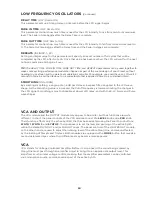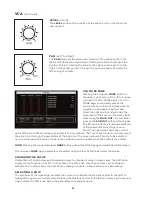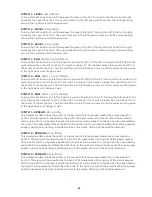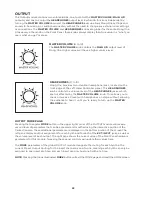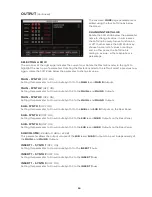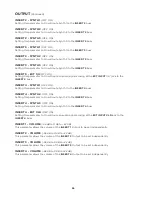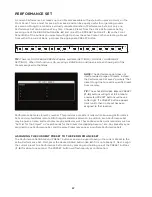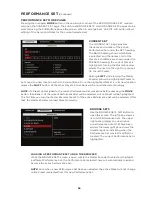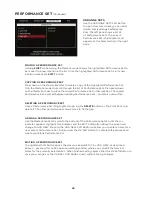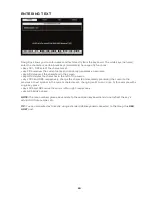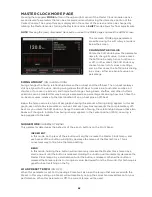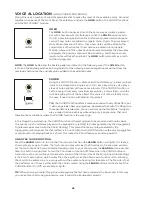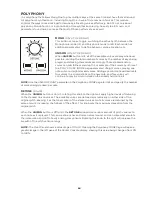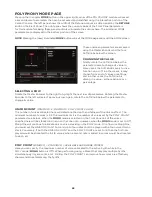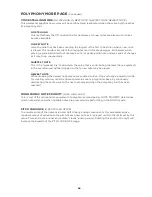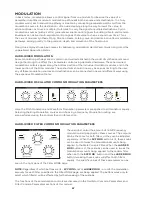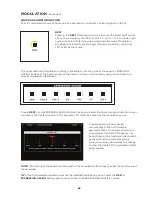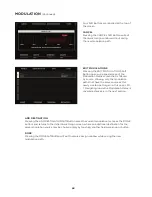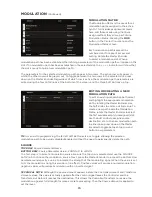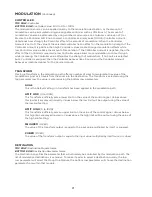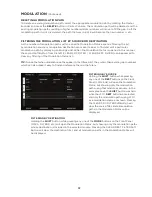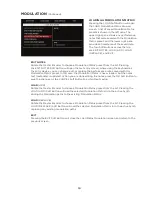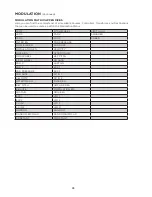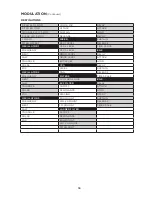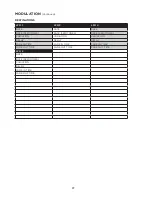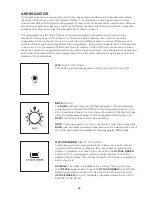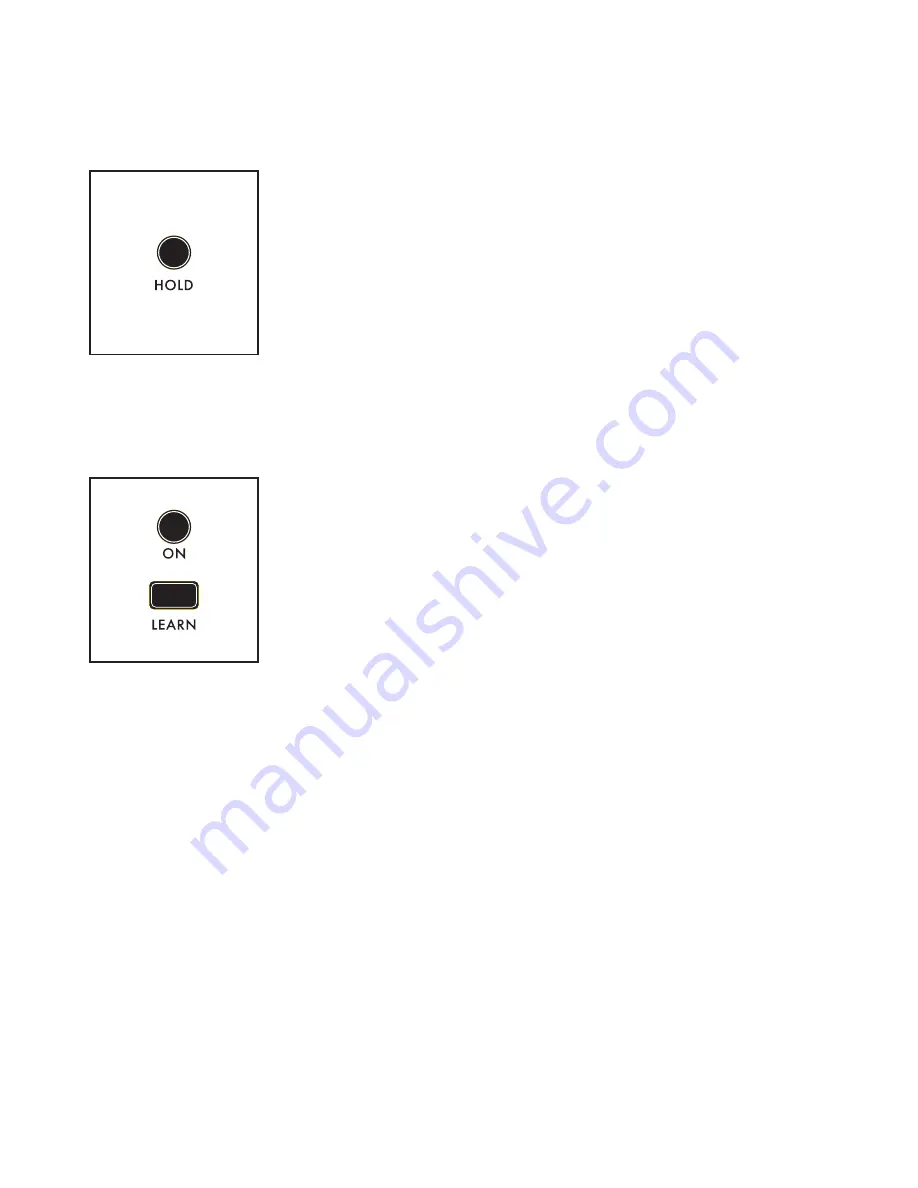
63
VOICE ALLOCATION
(HOLD/CHORD/POLYPHONY)
Moog One uses a number of sophisticated elements to make the most of the available voices. Grouped
together in one area of the Front Panel, these features include the
HOLD
button, the CHORD functions,
and the POLYPHONY module.
HOLD
The
HOLD
button behaves in much the same way as a sustain pedal –
but with a few important differences. When the
HOLD
button is set to
On (lit), notes being held when the button was pressed will continue to
sound. If new notes are added in a legato style – that is, they are played
while other notes are still held – these new notes will be added to the
current stack of held notes. If new notes are added in a non-legato
fashion, where all of the notes have been released before the new notes
are played, the previous notes will stop sounding, and these new non-
legato notes will take their place. The
HOLD
button also acts as a latch
for the Arpeggiator.
NOTE:
The
HOLD
button and the Sustain pedal can interact in the following way. If the
HOLD
button
is On and the Sustain pedal is also being held (On) then playing new non-legato notes will not clear the
previously held notes, they will simply be added to the sustained notes.
CHORD
Using the CHORD function – often called Chord Memory – allows multiple
notes to be stacked on a single key. In turn, each key will play also play a
stack of notes pitched at those same intervals. If the CHORD function is
set to a major triad, every individual key will play a major triad – with the
root being the pitch of the key itself. The choice of notes is totally up to
the user; it need not be a traditional chord at all.
TIP:
The CHORD function offers a massive sound with very little effort, but
it also can quickly chew up polyphony. Remember that, with the Moog One
three oscillator architecture, you can also set up the Oscillators’ tunings to
play a major triad on each key while using only a single voice. That said,
there are many situations where the CHORD function is the way to go.
In the Moog One architecture, the CHORD function is the last module to be presented with note values.
The priority runs from [Notes played on the keyboard or via MIDI] to [notes generated by the Arpeggiator]
to [interval values saved with the Chord Memory]. This means that every note generated by the
Arpeggiator (or Sequencer, for that matter) is in turn fed into the CHORD function, with every arpeggiated
or sequenced note playing back as a chord. This makes the Chord feature even more powerful.
USING THE CHORD FUNCTION
Press the
LEARN
button to turn on the Chord Learn function (the
LEARN
button will light). To create a
chord, play any series of notes. The first note you play will clear the Chord Learn function and will also
set the root note. When you are finished adding notes to your chord, press the
LEARN
button a second
time (the button will go dark) to turn the Chord Learn function off. Now, when the CHORD button is
turned On, each note will play a transposed version of that chord. One of the Moog One Global settings
is the Silent Learn option, which mutes the active synth while the Chord Learn function is On, allowing
the chord to be entered in a live venue without the audience hearing this take place. The flip side is that
the performer can’t hear it either. Both the chord created using the
LEARN
button and the state of the
CHORD button (On/Off) are saved per Synth.
TIP:
When entering a chord, Moog One will recognize the first note entered as the Root note; in this way
you can enter a chord using an inversion, and it will still be transposed correctly.
Summary of Contents for One
Page 2: ......
Page 6: ...This page left intentionally blank ...
Page 103: ...103 This page left intentionally blank ...
Page 113: ...113 This page left intentionally blank ...
Page 127: ...127 This page left intentionally blank ...
Page 146: ...146 ...


